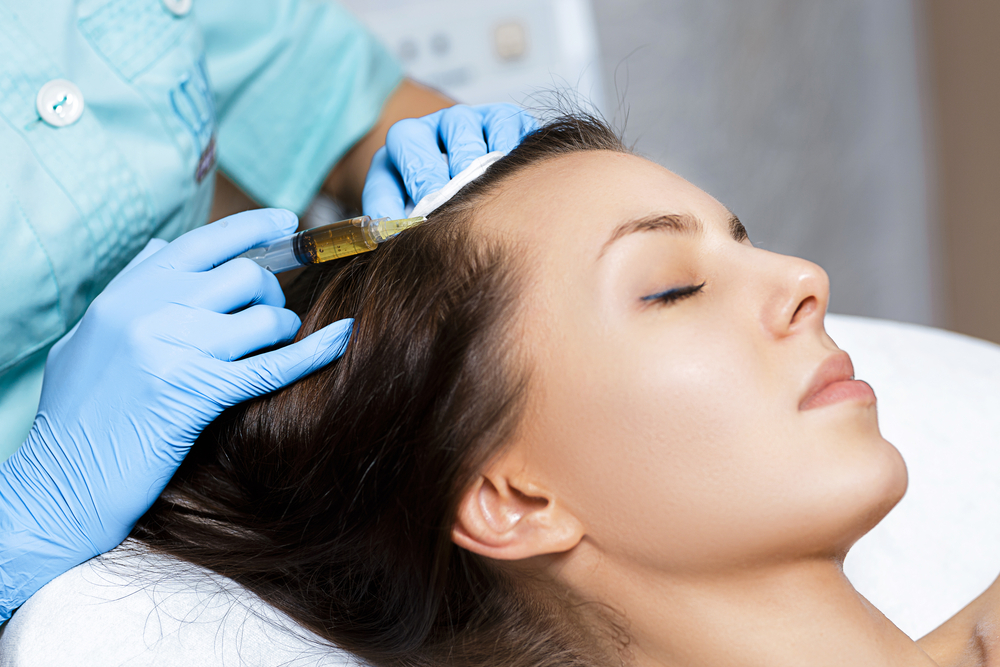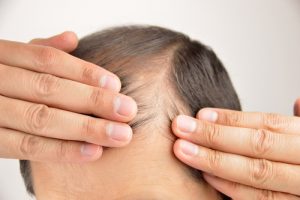Hair Restoration
Hair Restoration
 Platelet Rich Plasma (PRP) therapy is non-surgical therapeutic option for hair loss and hair thinning for both men and women. It is also a very safe proactive modality to prevent hair loss and thinning. PRP therapy has established itself to be effective in oral surgery, neurosurgery, plastic and cosmetic surgery, sports medicine and orthopedics. It has been used extensively in these specialties for the last twenty years with generally positive outcomes and success. PRP a is safe, non-allergic, and very promising in hair restoration, especially when combined with minoxidil and DHT blocker therapies .
Platelet Rich Plasma (PRP) therapy is non-surgical therapeutic option for hair loss and hair thinning for both men and women. It is also a very safe proactive modality to prevent hair loss and thinning. PRP therapy has established itself to be effective in oral surgery, neurosurgery, plastic and cosmetic surgery, sports medicine and orthopedics. It has been used extensively in these specialties for the last twenty years with generally positive outcomes and success. PRP a is safe, non-allergic, and very promising in hair restoration, especially when combined with minoxidil and DHT blocker therapies .
How does PRP work?
The concentrated platelets from your blood has growth factors that when injected into the skin and scalp, it stimulates tissue regeneration and growth of the hair follicles.
PRP stimulates inactive hair follicles into an active growth phase.
 PRP specific cells that causes hair growth include:
PRP specific cells that causes hair growth include:
Platelet-Derived Growth Factor (PDGF)—promotes blood vessel growth, cell replication, skin formation;
Transforming Growth-Factor-Beta (TGF-b)—promotes growth of matrix between cells, bone metabolism;
Vascular Endothelial Growth Factor (VEGF)—promotes blood vessel formation;
Epidermal Growth Factor (EGF)—promotes cell growth and differentiation, blood vessel formation, collagen formation;
Fibroblast Growth Factor-2 (FGF-2)—promotes growth of specialized cells and blood vessel formation; and, Insulin Like Growth Factor – (IGF)—a regulator of normal physiology in nearly every type of cell in the body
 How do you perform the procedure?
How do you perform the procedure?
The provider will draw a small amount of blood in a specific kit and process it in the Emcyte centrifuge. The centrifuge will concentrate the platelets around 5-9 times over the baseline and separates it from the harming white blood cells (granulocytes) and the irritating red blood cells. The higher and pure concentration, the better results you get, which is why it is important to ask about the type of centrifuge the treatment office uses.
While the blood is processed, the provider will block the nerves by either topical or local anesthesia. Once the PRP is ready, it will be injected in a timely manner into the scalp with a very fine needle. After the procedure, the patient can drive and wash his/her hair normally. The procedure is quick and very tolerable. In general, 3-6 treatments spaced 3-5 weeks is recommended for better results. Results vary among individuals.
Who should not have PRP Treatment?
Patients with history of heavy smoking, drug and alcohol use. Medical diagnosis such platelet dysfunction syndromes, thrombocytopenias, hypofibrinogenaemia, hemodynamic instability, sepsis, acute and chronic Infections, chronic liver disease, anti-coagulation therapy, chronic skin diseases or cancer, metabolic and systemic disorders.
